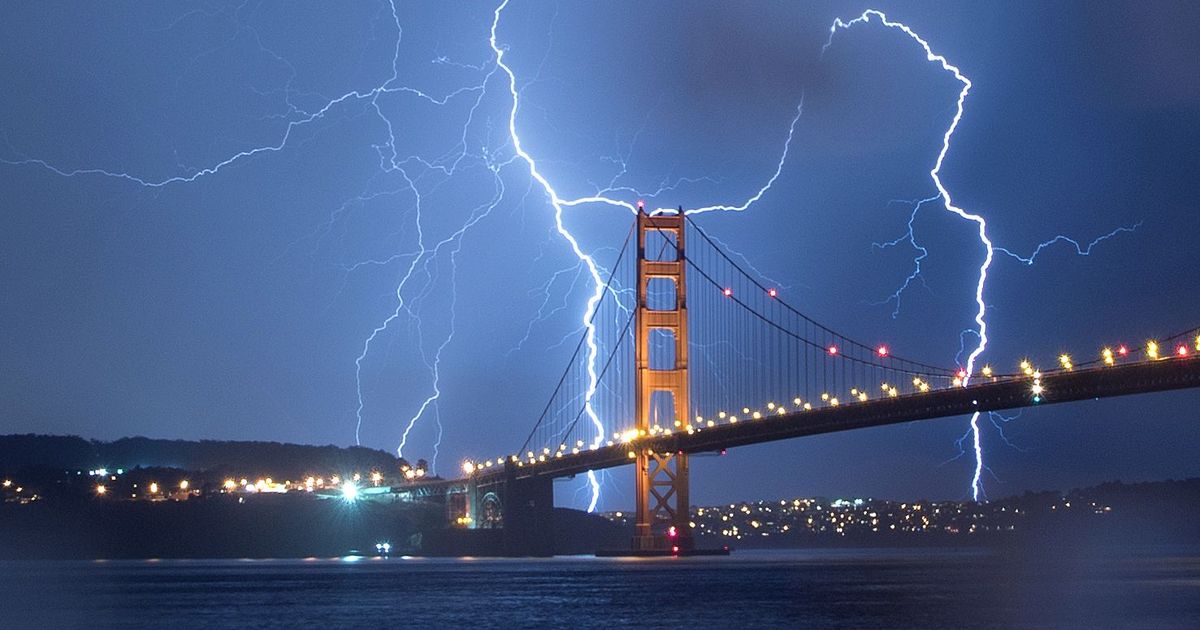The widely held belief that lightning never strikes the same location twice is frequently used metaphorically to suggest that rare events are unlikely to occur in the same location again. Notwithstanding, this saying is more legend than the real world. Lightning can and frequently does strike the same location multiple times, as demonstrated by scientific evidence and observations.
Lightning is a powerful electrical discharge that can be brought on by imbalances within the clouds themselves or between storm clouds and the ground. A lightning strike occurs when the difference in charge becomes excessively large, causing a rapid discharge of electricity. The typical lightning bolt can convey dependent upon one billion volts of power, making it a considerable regular peculiarity.
Reasons for the Repeated Attacks Tall Buildings and Natural Landmarks:

Tall structures, trees, and regular highlights like mountains are bound to be struck by lightning since they are nearer to the tempest mists and can all the more effectively act as conductors for the electrical release. The Domain State Working in New York City, for example, is struck by lightning roughly 20-25 times each year.
Materials with Conductivity:
Metal and other conductive objects and structures are more likely to be struck repeatedly. This is due to the fact that they have less resistance to electrical discharge, making them ideal lightning routes.
Conditions both Geographically and Meteorologically:

Thunderstorms are more common in some areas, resulting in more lightning strikes. Thunderstorm-prone regions, like the central United States, are more likely to experience frequent lightning strikes in particular locations.
Evidence from Science Lightning Rods:

The development of the lightning pole by Benjamin Franklin in the eighteenth century is a demonstration of the way that lightning can strike similar spot on numerous occasions. The purpose of lightning rods is to draw lightning and send it safely to the ground, preventing damage to buildings. Understanding that lightning can strike the same location multiple times is essential to the effectiveness of lightning rods.
Photographic Proof:

Multiple instances of lightning striking the same location multiple times have been captured by modern technology, including high-speed cameras and satellite imaging. These images offer tangible evidence that the phenomenon is not only possible but also fairly prevalent.
Logical Investigations:
Meteorologists and electrical engineers’ research backs up the idea that lightning frequently strikes the same spot multiple times. Studies of lightning patterns and strike frequencies consistently demonstrate that lightning frequently strikes a particular location.
Examples from the Empire State Building

The Empire State Building is frequently struck by lightning each year, as was mentioned earlier. Because of its height and metal structure, lightning strikes frequently strike it.
The Tower of Willis:

Another model is the Willis Pinnacle (previously Burns Pinnacle) in Chicago, which is additionally struck on various occasions every year. During thunderstorms, lightning strikes are attracted by its towering presence in the skyline.
Natural Features and Trees:

Lightning frequently strikes trees, particularly those that stand alone in open areas. They can suffer significant damage from repeated attacks over time, as evidenced by the scars and marks they leave on their trunks.
Safety Precautions It is critical to take appropriate safety precautions during thunderstorms because of the fact that lightning can strike the same spot twice. Here are some safety tips:
Stay inside:
During a storm, the safest place is inside a sturdy structure. Because lightning can travel through electrical and plumbing systems, do not use electrical appliances or plumbing fixtures.
Prevent Open Spaces:
Avoid open fields, hilltops, and isolated trees if you find yourself outside. With as little of your body as possible touching the ground, crouch low.
Utilize Lightning Safety Devices:

Introduce lightning bars and establishing frameworks on structures and different designs to shield them from lightning strikes.
In conclusion, it is a myth that lightning never strikes the same spot twice. Lightning can and does strike the same location multiple times, as demonstrated by scientific evidence, observations, and real-world examples. Effective safety measures and appreciation of the fascinating dynamics of this natural phenomenon require an understanding of this fact. Lightning’s ability to repeatedly strike the same locations, whether they are tall buildings, trees, or geographical features, serves as a reminder of nature’s power and unpredictable nature.




GIPHY App Key not set. Please check settings